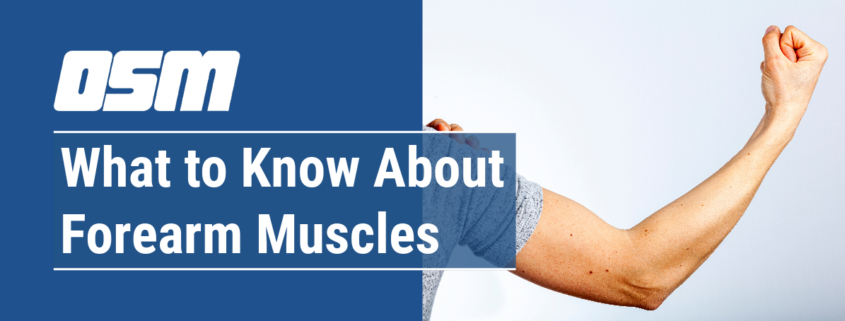What to Know About Forearm Muscles
Article featured on WebMD
Forearm Muscles Anatomy
Many muscles make up the forearm, extending from your elbow joint to your hand. The ulna and radius bones form a rotational joint that allows your forearm to turn the palm of your hand either up or down. Two large arteries, also known as the ulna and radius, run the length of the forearm and branch into smaller arteries that service your forearm’s musculature.
The bones in your forearm are prone to being broken because people often instinctually extend their forearm trying to break a fall or protect their face, which could lead to a fracture. The muscles in your forearm that allow you to bring about different movements can be categorized as anterior and posterior.
These are the muscles that can be found in your forearm:
The Anterior Compartment
The anterior superficial layer contains four muscles that originate from the medial epicondyle. The pronator teres muscle attaches to the shaft of the radius and is the most medial of the muscles in this layer. Its primary action is the pronation of the forearm. The flexor carpi radialis contributes to abduction and attaches to the base of metacarpals II and III.
Connecting to the flexor retinaculum and acting to flex at the wrist, the palmaris longus allows you to wave at a friend or say goodbye to a loved one. About 15% of the population does not have this muscle, though.
The flexor carpi ulnar is the most lateral of the muscles in the superficial layer, responsible for flexion and abduction at the wrist. It attaches the hand to the pisiform bone and base of the 5th metacarpal. This muscle allows you to move your wrist back and forth.
The Intermediate Layer
Only one muscle makes up the intermediate layer, which originates from the medial condyle of the humerus and the radius. The flexor digitorum superficialis (FDS) lies between the deep and superficial muscle layers and splits into four tendons that attach to the middle phalanx of a finger. At the proximal interphalangeal joints (PIPJs) and the metacarpophalangeal joints (MCPJs), the FDS flexes the fingers and contributes to wrist flexion.
The Deep Layer
The flexor digitorum profundus (FDP) splits into four tendons and originates at the ulna. This muscle attaches to the distal phalanx of each finger and allows flexion of the metacarpophalangeal joints and distal interphalangeal joints. Bending your ring, middle, index, and pinkie fingers is possible because of this muscle. The flexor pollicis longus extends laterally to the flexor digitorum profundus muscle.
This muscle attaches to the distal phalanx of the thumb and originates from the radius. It stretches laterally to the FDP and allows you to bend your thumb. A square-shaped muscle found in the FDL and FDP, the pronator quadratus attaches to the radius and originates from the ulna. The pronator quadratus allows you to pronate your forearm and is innervated by the median nerve.
Posterior Compartment
The Orthopedic & Sports Medicine Center of Oregon is an award-winning, board-certified orthopedic group located in downtown Portland Oregon. We utilize both surgical and nonsurgical means to treat musculoskeletal trauma, spine diseases, foot and ankle conditions, sports injuries, degenerative diseases, infections, tumors and congenital disorders.
Our mission is to return our patients back to pain-free mobility and full strength as quickly and painlessly as possible using both surgical and non-surgical orthopedic procedures.
Our expert physicians provide leading-edge, comprehensive care in the diagnosis and treatment of orthopedic conditions, including total joint replacement and sports medicine. We apply the latest state-of-the-art techniques in order to return our patients to their active lifestyle.
If you’re looking for compassionate, expert orthopedic and podiatric surgeons in Portland Oregon, contact OSM today.
Phone:
Address
17355 Lower Boones Ferry Rd Suite 100A
Lake Oswego, OR 97035
Hours
Monday–Friday
8:00am – 4:30pm



